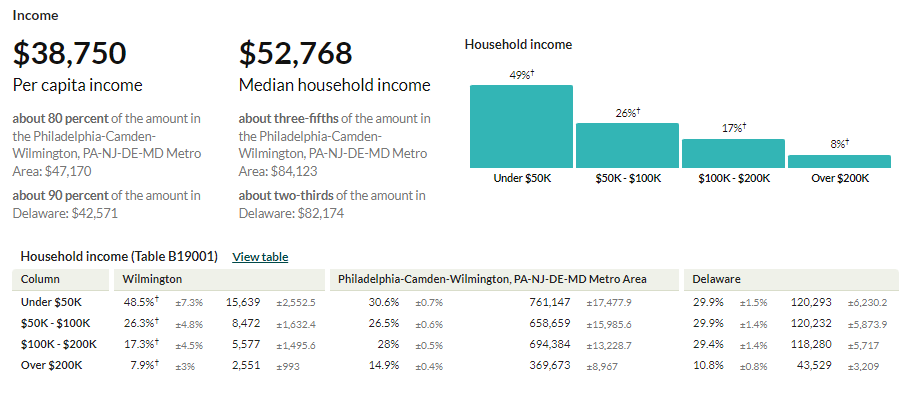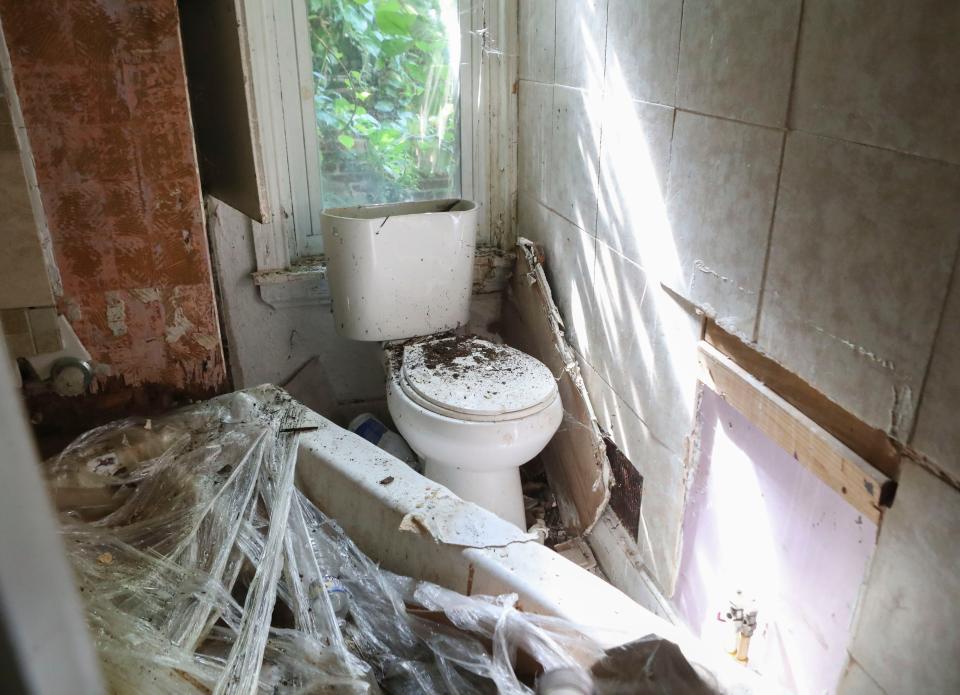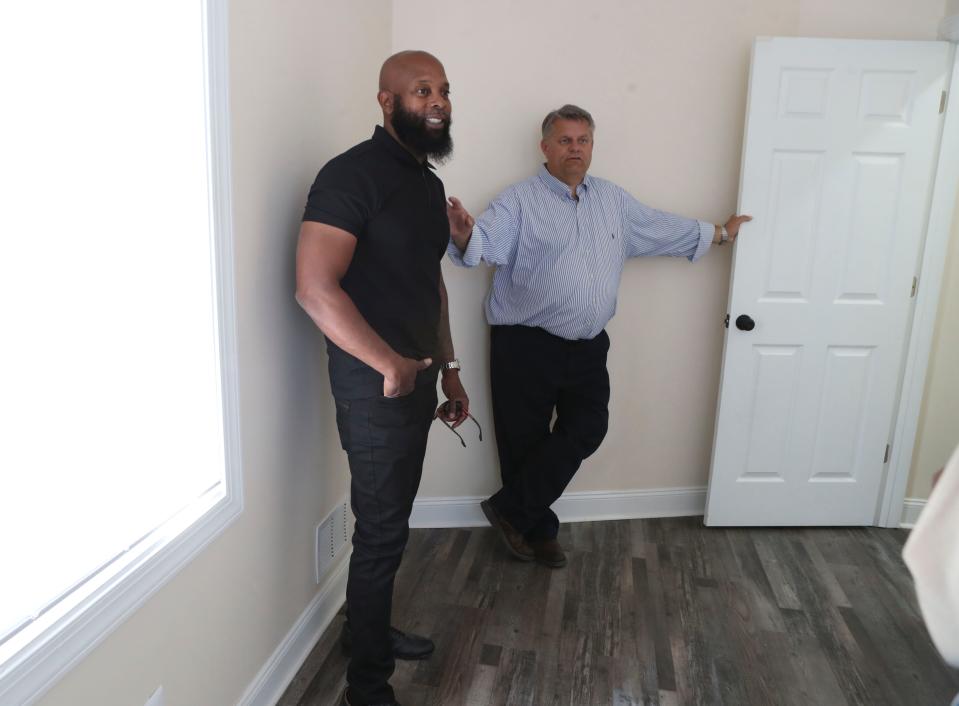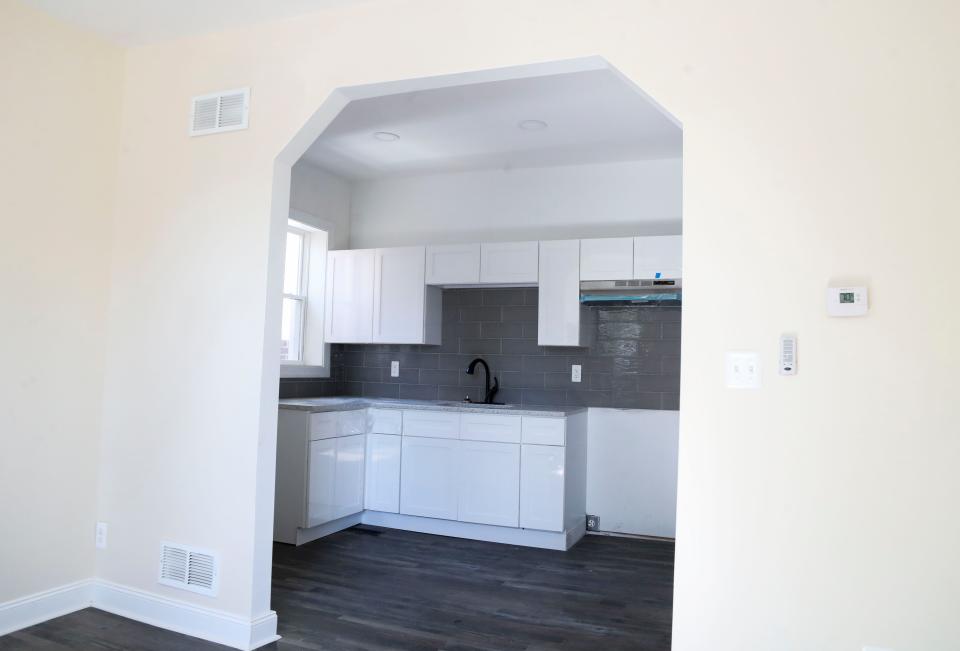Amid the housing shortage, why is renovating homes in Wilmington so expensive?
Delaware is projected to gain nearly 25,000 new households by 2030. A recent housing assessment commissioned by the Delaware State Housing Authority found developers are capable of building homes to meet much of the demand. However, the report emphasized a known crisis: a severe shortage of affordable housing, especially for those with the lowest incomes.
For example, the median selling price of single-family homes in the First State increased from $370,000 in June to $375,000 in July. Condominiums and townhomes experienced a 5.6% increase, jumping from a median of $286,000 in June to $302,000 in July.
The matter is even more pronounced in Wilmington where the per capita income is $33,567 compared with the state's per capita income of $42,571. Amid the housing shortage, the city has around 1,400 vacant units that could be potentially restored for housing. However, renovating these homes, although believed to be a cost-effective option, can be as expensive as buying a new home in Delaware.

Creating affordable, safe housing has long been a challenge in the city, but for over 100 years, one institution has attempted to tackle the issue.
In the 1930s, William Bancroft founded Woodlawn Trustees to buy land and develop affordable housing in Wilmington. The nonprofit later formed the Todmorden Foundation in 2014 to continue its mission to create affordable housing in the city. These nonprofits are renovating 20 housing units in Wilmington's Eastside neighborhood to make them available for the economically disadvantaged.
Delaware Online/The News Journal met with Richard Przywara, president and CEO of Woodlawn Trustees, at a few of these properties to explore the factors that contribute to the high costs associated with the development of affordable housing.
Since COVID pandemic, just buying a vacant unit can cost $40K-$70K
The inflated cost of renovating vacant houses is immediately evident in the purchase price, according to Przywara. In the past, he said, neglected residential properties in Wilmington could be bought for $15,000 to $30,000. Since the onset of the pandemic, the market values of property in Wilmington have experienced a significant increase, and this trend has also extended to the costs of vacant homes.

Przywara said you can now expect to pay $40,000 to $70,000 for these types of properties.
Once acquired, it is necessary to clear the interior of the house before proceeding with any renovations. While it is typically assumed that no one is residing in the homes that Woodlawn Trustees and the Todmorden Foundation are renovating, there may be instances where they are still occupied.
Przywara sends a staffer to check for any squatters before entering homes to begin work. If any are found, they will be asked to vacate the premises, kindly — as in alignment with the organizations' Quaker values. In some cases, when a family is discovered residing in one of the homes, the nonprofit will cover the expense of relocating them to another property.
Any rodent or roach infestation and cleanup from previous residents are also an expense to factor in.
The increased costs of materials apply to every address
Both Przywara and Richard Dyton, a contractor who works with Woodlawn Trustees and the Todmorden Foundation, said it's important to realize that certain expenses related to renovating a residential building are fixed and cannot be avoided irrespective of whether the property is a rowhome on Wilmington's Eastside or an estate home in Greenville.

The developers said due to the COVID-19 pandemic's impact on the supply chain, the costs of house-building materials, including lumber, plumbing, electrical components and paint, have significantly increased. "If you had a material list of $20,000 pre-COVID, it's now at least 50, maybe $60,000 just for material costs,” Dyton said.
The cost of labor, as well as the expense of replacing all electrical wiring, plumbing fixtures and the heating system in a home, can easily add up to nearly $40,000, regardless of the home's size, Dyton explained.
Costs before demolition and construction work begin
In the early 1900s, when many homes in Wilmington were built, there were few building codes in place. Today, when remodeling changes exceed $25,000, strict regulations must be followed.
To obtain a building permit for construction work on structural, mechanical, electrical and plumbing modifications exceeding this amount or on commercial roofing projects, it is necessary to obtain approval from the city based on an architectural plan. Przywara said the services of an architect or engineer can cost between $8,000 and $10,000.
The architect or engineer will assess the building's structures and major systems to identify which ones need to be updated to meet modern codes. In certain cases, the installation of a sprinkler system may be necessary. According to Dyton, the cost of sprinkler systems can reach up to $70,000.
"Sometimes you get into a unit and you're like, 'What did I get into? I thought I was at $150,000 and now I'm at $225,000,'" Przywara said.
After the building permit approval, the focus shifts to actual renovation. According to Przywara and Dyton, it is essential to prioritize the repair of the roof to ensure the stability and security of the entire structure beneath it.
Many homes on Eastside were built during the 1930s and 1940s with brick. Some are in such a state of severe disrepair that the mortar has begun to crumble. Pointing out the damage along the roofline of one rowhome on Bennett Street, Przywara said correcting the brickwork there would cost an estimated $10,000 to $15,000 not to mention the possibility of having to fix a neighboring roof.
"All of these roofs are connected. One building having a problem on the roof can actually affect the neighbor," Przywara said. Brickwork aside, according to Dyton, if there is no need for sub-roof repair, a new roof will cost around $12,000. However, if sub-roof repair is necessary, the cost can range from $15,000 to $22,000.
Lead paint remediation is a given in older homes
The remediation of lead paint hazards in older homes also has to be addressed. To do this, Przywara said that all paint, wallpaper, and drywall would need to be removed. The threat of lead contamination extends to the paint or lead-filled caulk on windows necessitating the replacement of all existing windows instead of simply painting over them. Evaluating the condition of existing wood frames to determine if any repairs or replacements are required, will also affect costs.

If interior framing of the house is necessary, an additional $25,000 to $30,000 will need to be allocated. Between framing and essential mechanicals, expenditures are around $70,000.
It's important to note that these estimates do not cover other significant expenses such as drywalling, flooring options or counter and cabinet selections. These factors can further increase the overall cost of the construction or renovation project.
Contact reporter Anitra Johnson at ajohnson@delawareonline.com. Join her on the Facebook group Delaware Voices Uplifted. Support her work and become a subscriber.
This article originally appeared on Delaware News Journal: Breaking down what makes renovating Wilmington homes so expensive

